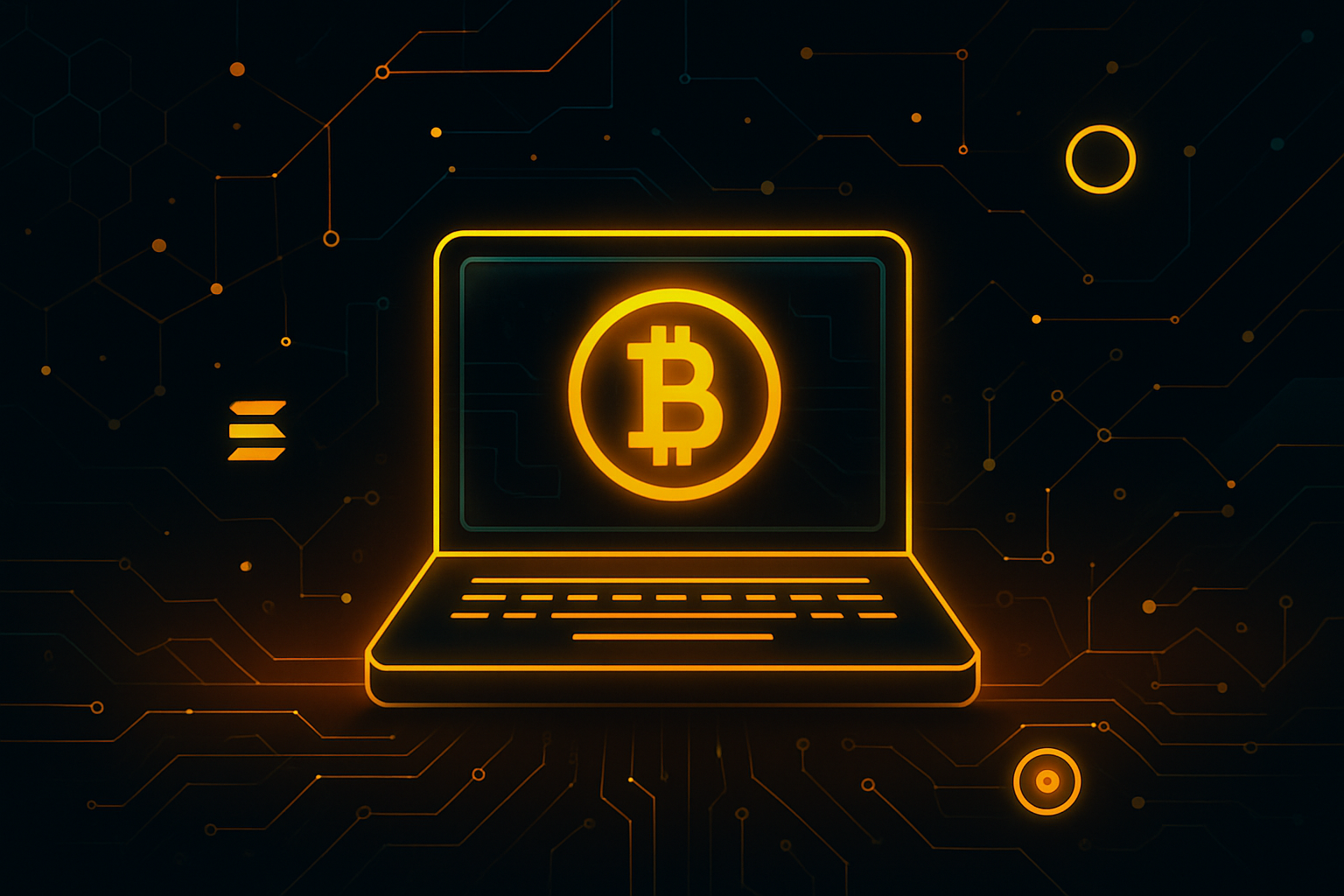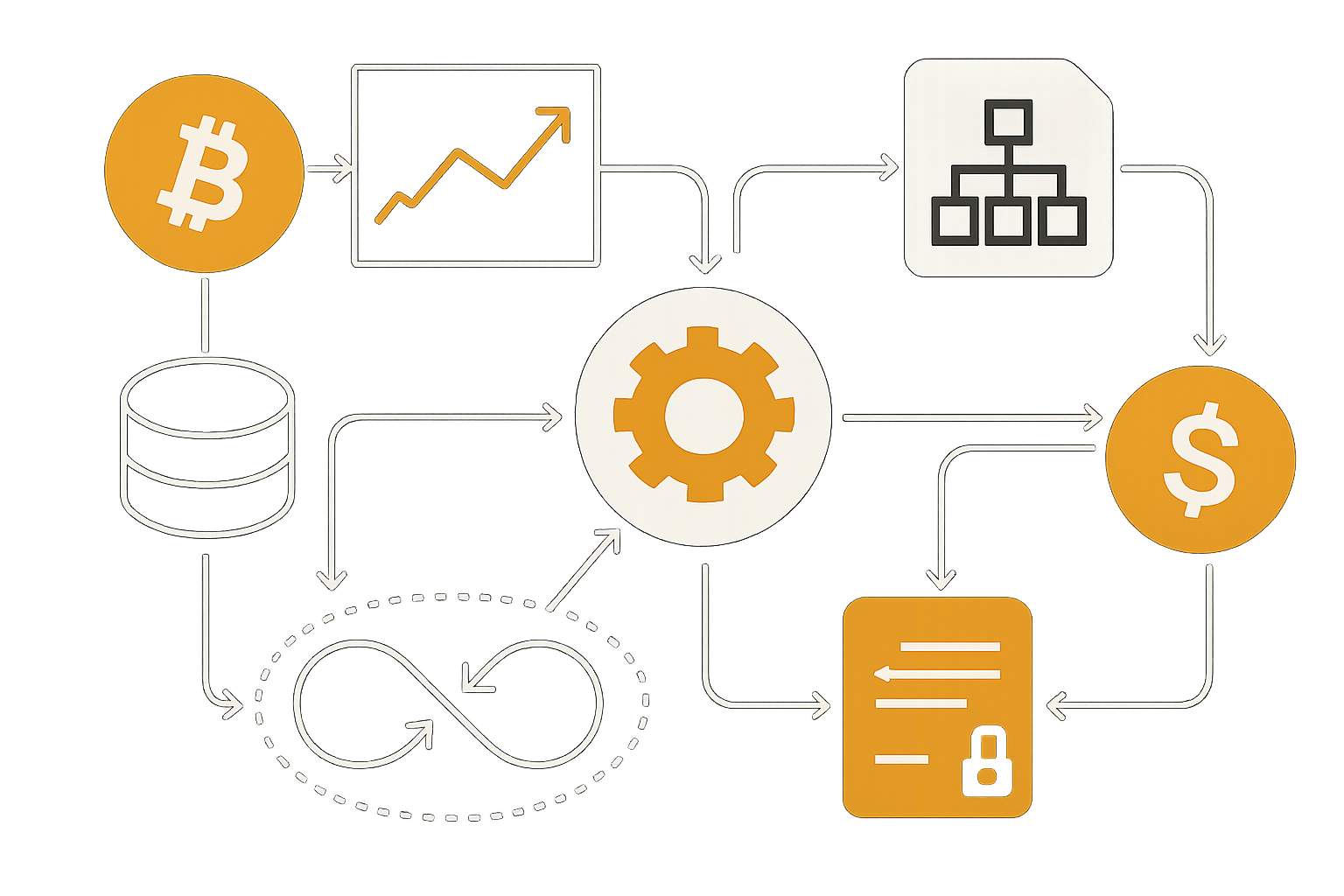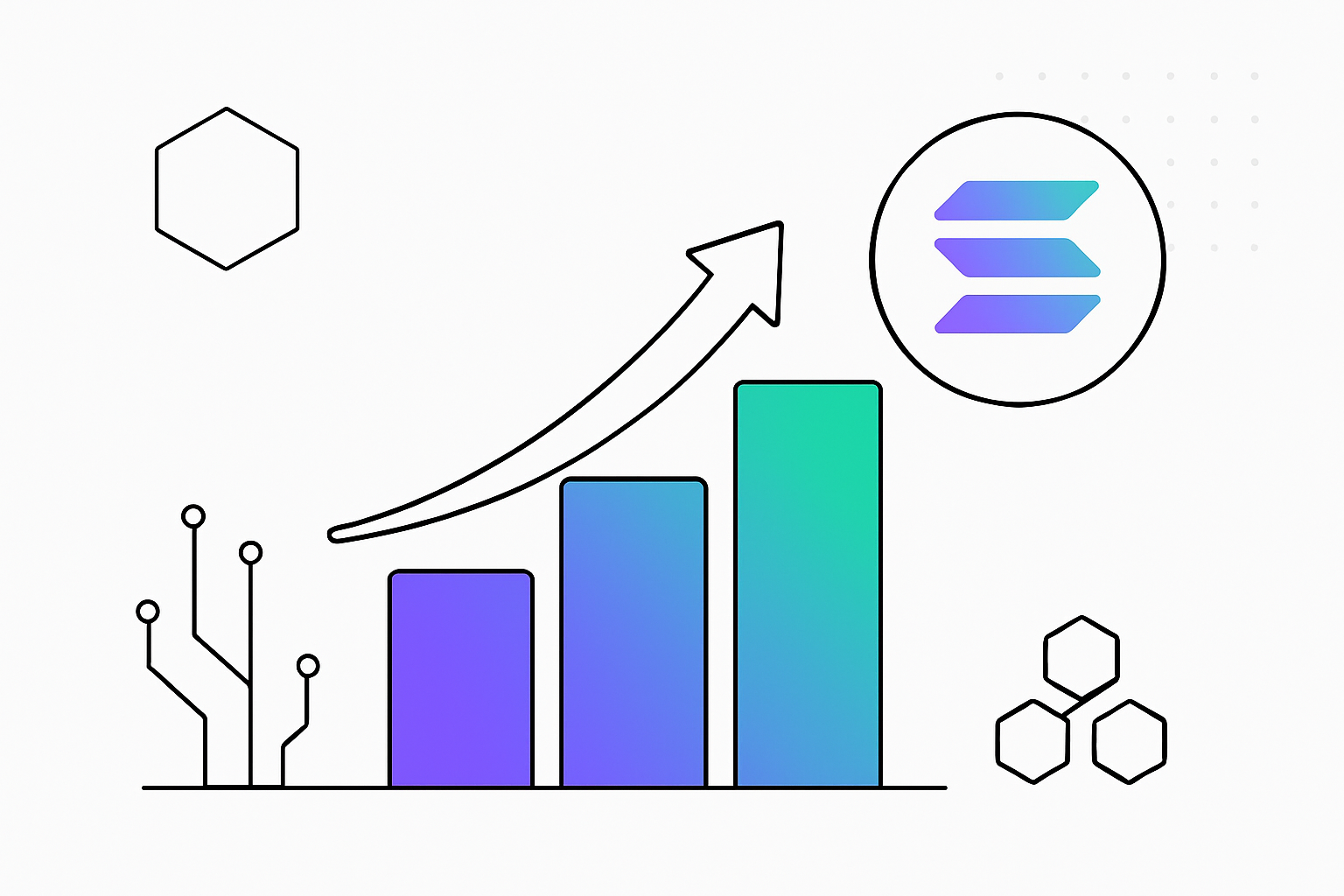Solana ETF Fees Visualized: How Spot and Staking Fees Compare in 2025

Solana’s investment landscape in 2025 is defined by fierce competition among ETF providers and a rapidly maturing staking ecosystem. As Solana’s price holds steady at $200.48, with a 24-hour high of $208.65 and low of $194.86, the debate around Solana ETF fees versus direct staking costs has never been more relevant for investors seeking both simplicity and yield.
How Solana ETF Fees Stack Up in 2025
The launch of spot Solana ETFs has triggered a fee war reminiscent of early Bitcoin ETF days. VanEck recently amended its S-1 filing, lowering its management fee to 0.30% while incorporating regulated staking, making it one of the most competitive products on the market. Bitwise, not to be outdone, offers an even lower annual management fee at 0.20%, also including partial staking rewards in its structure (source). This trend is pushing other entrants, like Canary, to file for spot Solana ETFs with expense ratios as high as 0.50% but without sharing staking rewards, a key differentiator for discerning investors.
Eric Balchunas, a leading ETF analyst, notes:
The inclusion of staking in regulated ETFs is significant because it directly impacts net returns for holders, especially when compared to traditional spot ETFs that do not pass through these rewards.
Direct Staking on Solana: Fees and Yields Visualized
For those willing to manage their own assets or use decentralized platforms, direct staking remains a compelling alternative. Here’s how the current options break down:
Solana Staking APYs and Fee Structures Compared (2025)
-

Bitwise Solana Staking ETF: Offers exposure to SOL with an annual management fee of 0.20%. Includes partial staking rewards, making it one of the lowest-cost ETF options for Solana investors.
-

VanEck Solana Staking ETF: Features an annual management fee of 0.30% and incorporates regulated staking rewards. SOL is delegated through approved providers, offering a balance of accessibility and yield.
-

Zero-Commission Validators: Direct staking with select validators yields 7–10% APY with no base commission. Validators may share MEV profits, maximizing net rewards for stakers.
-

Low-Fee Validators (1–5% Commission): Staking directly with reputable validators typically yields 6.8–8.5% APY, offering a compromise between low fees and reliable service.
-

Enhanced Liquid Staking (Jito Network): Jito Network provides approximately 7.2% APY with a 4% management fee and a 0.1% withdrawal fee, combining liquidity with competitive returns.
-

Standard Liquid Staking (Marinade Finance): Marinade Finance offers around 7.5% APY and charges a 9–10% performance fee on staking rewards, with easy access to liquid SOL tokens.
-

Centralized Exchange Staking (Binance, Coinbase): Platforms like Binance and Coinbase provide APYs between 3–8%, but may deduct 8–35% of rewards as platform fees, trading simplicity for lower net yields.
- Zero-Commission Validators: Offer APYs between 7-10%, sharing MEV profits with no base commission (source).
- Low-Fee Validators (1-5%): Deliver APYs from 6.8-8.5%, balancing reward and risk.
- Enhanced Liquid Staking (e. g. , Jito Network): Provides approximately 7.2% APY, charging a 4% management fee plus a small withdrawal fee.
- Standard Liquid Staking (Marinade Finance): Offers around 7.5% APY with a performance fee near 9-10% (source).
- CEX Platforms: Binance and Coinbase offer convenience but charge platform fees ranging from 8% up to an eye-watering 35% of rewards.
This diversity gives investors flexibility but also adds complexity when comparing net returns across different methods.
The True Cost: Comparing ETFs vs Direct Staking Net Returns
The underlying question for any investor is simple: Which method delivers superior net returns after all fees are accounted for? While ETFs such as those from VanEck and Bitwise offer ease-of-access and regulatory safeguards at low management fees (0.20%-0.30%), they may only partially pass through staking yields, typically advertised at around 5-8%. In contrast, direct stakers can potentially capture higher yields (up to or above 10%) but must navigate validator commissions, platform risks, and sometimes hefty withdrawal or performance fees.
Solana (SOL) Price Prediction Table: 2026-2031 Post-ETF Era
Projected SOL price scenarios following ETF launches, staking integration, and evolving market conditions.
| Year | Minimum Price | Average Price | Maximum Price | Year-over-Year Change (Avg) | Market Scenario Insights |
|---|---|---|---|---|---|
| 2026 | $170.00 | $225.00 | $310.00 | +12% | ETF adoption stabilizes inflows; staking rewards boost yield appeal. Potential volatility if macro conditions worsen. |
| 2027 | $190.00 | $275.00 | $410.00 | +22% | Regulatory clarity and institutional inflows drive growth. Competition from emerging L1s could cap upside. |
| 2028 | $220.00 | $320.00 | $500.00 | +16% | Scaling upgrades and DeFi/NFT resurgence support price. Global crypto adoption rises, but profit-taking may cause pullbacks. |
| 2029 | $250.00 | $370.00 | $580.00 | +16% | Cross-chain interoperability and new dApps attract capital. ETF fee wars intensify, benefiting investors. |
| 2030 | $280.00 | $415.00 | $670.00 | +12% | Solana cements its role in enterprise blockchain. Regulatory harmonization in US/EU boosts confidence. |
| 2031 | $320.00 | $470.00 | $770.00 | +13% | Mainstream ETF adoption, steady staking returns, and Web3 expansion drive sustained valuation growth. |
Price Prediction Summary
Solana’s price outlook for 2026-2031 is robust, reflecting the impact of ETF launches, competitive fee structures, and staking integration. Average prices are projected to rise steadily from $225 in 2026 to $470 by 2031, with minimum and maximum scenarios capturing both bullish and bearish market cycles. ETF-driven inflows, regulatory clarity, and ongoing network upgrades are key catalysts, while competition and macro risks remain notable challenges.
Key Factors Affecting Solana Price
- ETF adoption and inflows: Lower fees and staking integration attract institutional and retail investors.
- Regulatory environment: SEC and global regulatory clarity critical to sustained ETF growth and investor confidence.
- Staking rewards: Integration into ETFs enhances yield, supporting long-term holding and price stability.
- Network upgrades: Improvements in scalability, security, and dApp ecosystem drive adoption.
- Competition: Other L1 blockchains (e.g., Ethereum, Avalanche, Sui) could impact Solana’s market share and valuation.
- Macro environment: Global economic conditions, interest rates, and risk appetite influence crypto markets at large.
Disclaimer: Cryptocurrency price predictions are speculative and based on current market analysis.
Actual prices may vary significantly due to market volatility, regulatory changes, and other factors.
Always do your own research before making investment decisions.
The ability to compare these structures visually empowers investors to make informed decisions based on their own risk tolerance and desired involvement level.
Solana ETF Fees Visualized: 6-Month Price Comparison (2025)
Comparing Solana’s performance with major cryptocurrencies over the past 6 months, using real-time data as of 2025-10-15.
| Asset | Current Price | 6 Months Ago | Price Change |
|---|---|---|---|
| Solana (SOL) | $201.49 | $180.25 | +11.8% 🚀 |
| Bitcoin (BTC) | $111,636.00 | $105,000.00 | +6.3% |
| Ethereum (ETH) | $4,069.29 | $3,900.00 | +4.3% |
| Cardano (ADA) | $0.6879 | $0.6500 | +5.8% |
| Avalanche (AVAX) | $22.27 | $21.00 | +6.0% |
| Polkadot (DOT) | $3.19 | $3.00 | +6.3% |
| Polygon (MATIC) | $0.1988 | $0.1900 | +4.6% |
| BNB (BNB) | $1,179.27 | $1,150.00 | +2.5% |
Analysis Summary
Solana (SOL) outperformed all major cryptocurrencies in the past 6 months, with an impressive +11.8% price increase. This strong growth coincides with the introduction of competitive Solana ETF fees and staking options, highlighting SOL’s leading position in the market.
Key Insights
- Solana (SOL) achieved the highest 6-month price growth (+11.8%) among major cryptocurrencies.
- Bitcoin (BTC) and Polkadot (DOT) saw moderate gains (+6.3%), while Ethereum (ETH) trailed with +4.3%.
- BNB (BNB) had the smallest increase (+2.5%) over the same period.
- The launch of Solana ETFs with low management fees (0.20%-0.30%) and staking features may be contributing to SOL’s strong performance.
All prices and percentage changes are sourced directly from real-time market data as of 2025-10-15. The table compares current and 6-month historical prices for each asset, ensuring accuracy and consistency with the provided data.
Data Sources:
- Main Asset: https://www.coingecko.com/en/coins/solana
- Bitcoin: https://www.coingecko.com/en/coins/bitcoin
- Ethereum: https://www.coingecko.com/en/coins/ethereum
- Cardano: https://www.coingecko.com/en/coins/cardano
- Avalanche: https://www.coingecko.com/en/coins/avalanche
- Polkadot: https://www.coingecko.com/en/coins/polkadot
- Polygon: https://www.coingecko.com/en/coins/polygon
- BNB: https://www.coingecko.com/en/coins/bnb
Disclaimer: Cryptocurrency prices are highly volatile and subject to market fluctuations. The data presented is for informational purposes only and should not be considered as investment advice. Always do your own research before making investment decisions.
Evaluating the net returns of Solana exposure in 2025 means looking beyond headline APYs or management fees. For ETF investors, the value proposition lies in simplicity, liquidity, and regulatory oversight, especially for those who prefer not to manage private keys or deal with on-chain complexities. Yet, these advantages come at the cost of intermediary fees, potential dilution of staking rewards, and dependency on the ETF manager’s operational efficiency.
Direct staking, by contrast, offers higher gross yields but is not without pitfalls. Validator selection matters: zero-commission nodes may seem optimal but could expose users to slashing risk or MEV volatility. Liquid staking platforms like Marinade and Jito provide flexibility and composability within DeFi, but their performance fees can erode much of the additional yield if not carefully monitored.

What Drives Fee Competition? Institutional Flows and Staking Demand
The surge in institutional interest: evident from on-chain inflows of $5.49 million as Solana steadies above $200.48: has forced ETF issuers to sharpen their offerings (source). As more capital seeks regulated SOL exposure, providers are incentivized to cut fees and pass through greater portions of staking rewards. This dynamic mirrors the fee compression seen in Bitcoin ETFs post-launch.
The inclusion of regulated staking in ETFs is a watershed moment for crypto markets: it bridges traditional finance with native blockchain yield mechanisms. Investors who want exposure to Solana’s upside without managing wallets now have a path that also captures some on-chain income, a significant evolution from early crypto ETPs that ignored protocol-level rewards.
Key Takeaways for Solana Investors in 2025
How to Choose: Solana ETFs vs. Direct Staking
-

Assess Your Desired Level of Convenience and Access: Solana ETFs like Bitwise Solana Staking ETF (0.20% fee) and VanEck Solana Staking ETF (0.30% fee) offer easy purchase and sale via traditional brokerage accounts, with built-in staking rewards. Direct staking requires managing wallets and validators but gives you full control over your SOL.
-

Compare Fee Structures for Each Option: ETFs charge low management fees (0.20%–0.30%) and may take a portion of staking rewards. Direct staking with zero-commission validators can offer APYs of 7–10% with no base commission, while liquid staking platforms like Jito Network (4% fee) or Marinade Finance (9–10% fee) take a cut of rewards.
-

Evaluate Potential Returns and APYs: Direct staking typically yields higher APYs (up to 10%+ with zero-commission validators). ETFs may offer slightly lower net returns due to management and staking fees, but include staking rewards. Liquid staking platforms and exchanges vary: Marinade Finance offers ~7.5% APY (minus 9–10% fee), while Binance and Coinbase offer 3–8% APY with platform fees up to 35%.
-

Consider Security and Regulatory Protections: ETFs are regulated financial products, providing investor protections and custody by established institutions. Direct staking exposes you to on-chain risks and requires careful management of private keys. Liquid staking platforms and exchanges add counterparty risk and may not offer the same regulatory safeguards.
-

Factor in Liquidity and Flexibility Needs: ETFs provide instant liquidity during market hours and can be traded like stocks. Direct staking may require unbonding periods (typically 2–3 days on Solana), while liquid staking tokens (like mSOL or JitoSOL) can be traded instantly but may have price slippage.
- Risk Appetite: Direct stakers accept more technical complexity and platform risk for higher potential yields; ETF buyers trade some yield for simplicity and oversight.
- Fee Awareness: Even small differences in management or validator fees compound over time, review each product’s prospectus or validator commission policy closely.
- Reward Structure: Not all ETFs pass through full staking rewards; check how each fund distributes (or withholds) protocol income before investing.
- Liquidity Needs: ETFs offer daily market liquidity; direct staked SOL may be locked or subject to unbonding periods depending on platform choice.
The bottom line? There is no one-size-fits-all answer when it comes to Solana investment fees. The landscape will likely continue evolving as new products launch, competition heats up, and both retail and institutional demand shape the economics of SOL exposure. Patience and research remain your best allies, whether you’re seeking passive returns via an ETF or optimizing your own validator mix for maximum APY.





